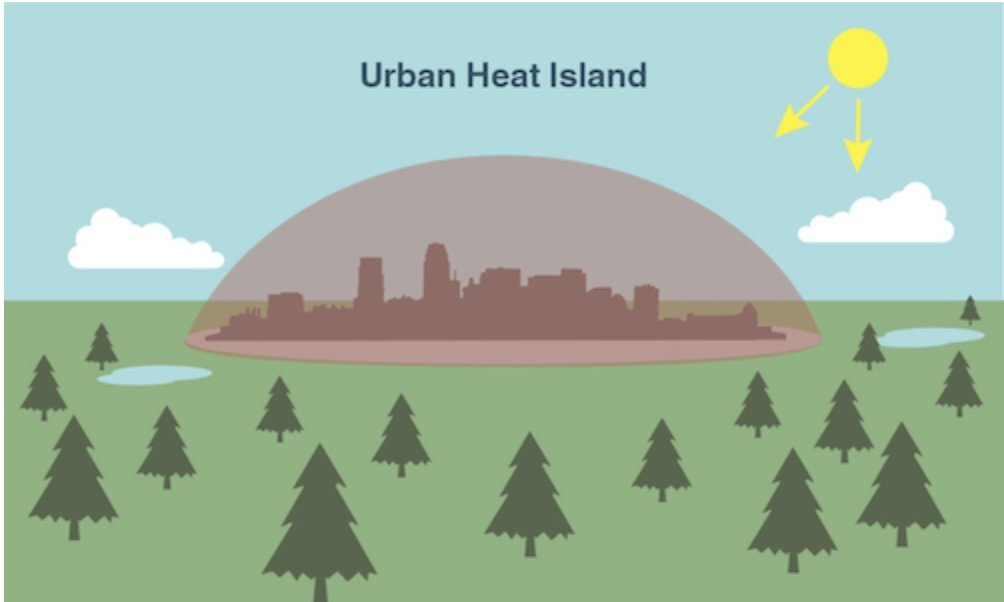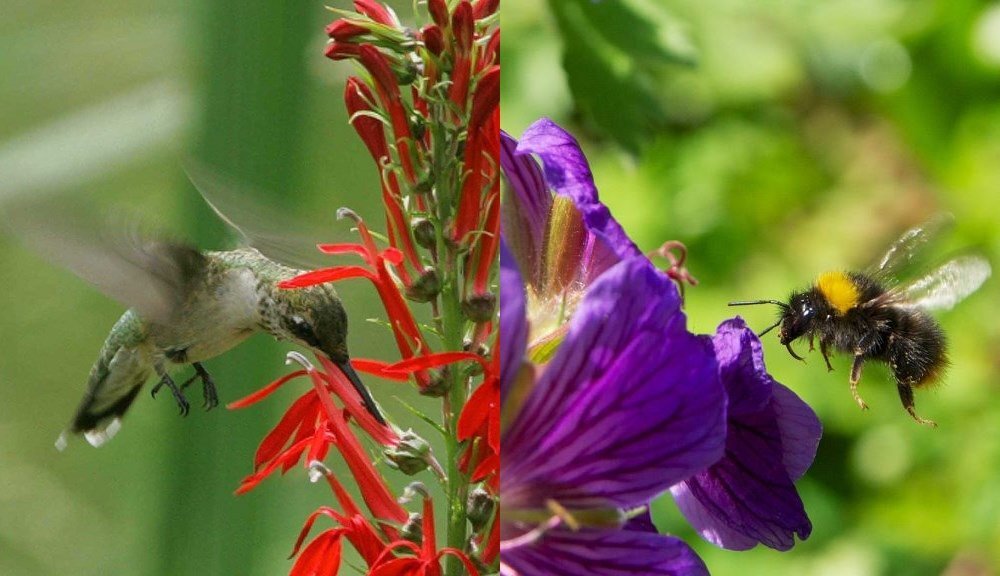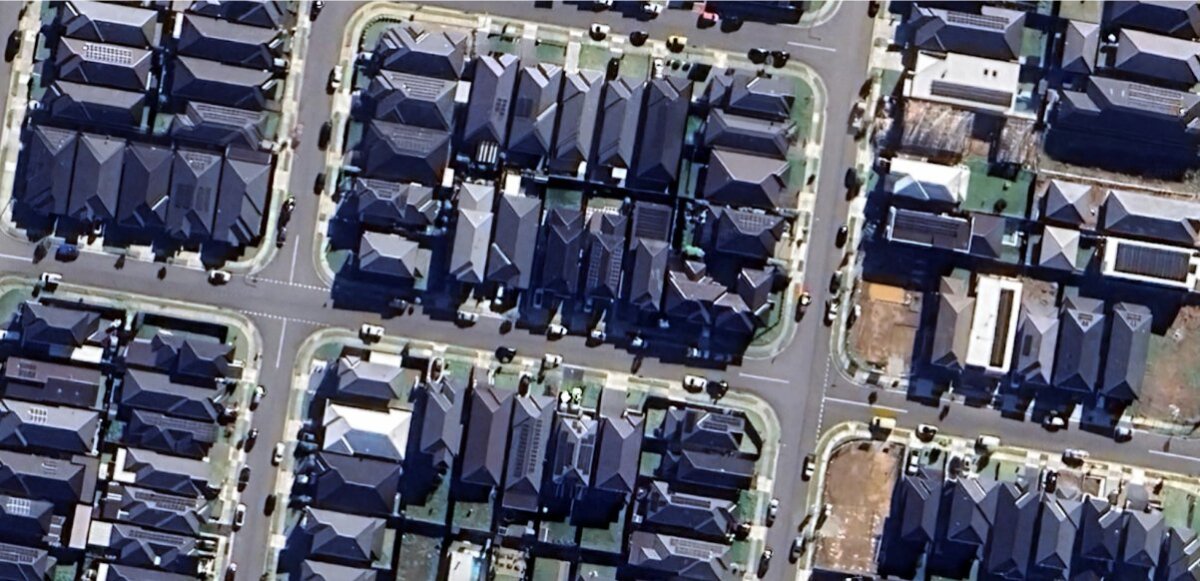PlantingSeeds’ key mission is to support urban biodiversity. But climate change is in our sights as well.
By teaching students – younger and older Australians – about the urban heat island effect (UHI) and providing tangible ways for them to witness how green and synthetic spaces vary wildly in temperature, we learn that plantings can help to take the heat out of scorchers. Our B’lazer module of the B&B Highway does just that.
What is an Urban Heat Island?
An Urban Heat Island (or UHI) occurs when urban areas – such as cities, large towns and dense suburbs – experience much warmer temperatures in comparison to nearby rural areas (Fig.1).

Fig.1. Illustration of UHI. Source: NASA Climate Kids (2019)
Due to urban areas being so densely constructed and populated, large amounts of ‘waste heat’ are produced from operating vehicles, power generation and any activity that uses energy (even jogging!). When waste heat is trapped between skyscrapers and densely packed buildings, UHIs can develop.
In urban areas where green spaces are sparse and natural landscapes have been diminished, the natural cooling services provided through tree shade, water transpiration from plant leaves and surface water body evaporation cannot adequately occur – leading to higher temperatures. Research indicates that the temperatures in urban areas with few trees can be more than 5.5ºC higher than in nearby suburbs.
Additionally, the materials conventionally used in creating urban environments (e.g. concrete, brick and tile) have ‘high thermal mass’, allowing them to absorb and retain a lot of heat over a long period of time – further contributing to the UHI effect (Fig.2).
‘Cool roofs’ featuring coatings of reflective paint or light-coloured materials allow buildings to reflect more sunlight back into the atmosphere rather than absorbing it (Smith and Hutyra 2025). However, according to The Conversation article by Smith and Hutyra (2025), cool roofs come with limits, with the Boston University scientists explaining that “Cool roofs work better on flat roofs than sloped roofs with shingles, as flat roofs are often covered by heat-trapping rubber and are exposed to more direct sunlight over the course of an afternoon (Smith and Hutyra 2025).

Fig.2. Aerial view image of Astral, NSW. Source: Google World (2025)
Impacts of UHI
The high temperatures associated with UHIs impact our health, climate and environment.
The increased instances of hot weather events due to UHIs further contributes to cases of heat-related illnesses and deaths – especially in young children, older adults and those with disabilities and chronic health issues (US EPA 2024).
Consistently high temperatures may see a rise in the use of cooling devices such as air conditioning, leading to increased energy use and a reinforcement of the UHI cycle through waste heat. Also, as 60% of Australia's electricity needs are currently met through burning fossil fuels (DCCEEW 2024), the release of greenhouse gases and other air pollutants will accelerate the rate of climate change and its various impacts.

Coal-fired power station. Source: Igini (2022)
Elevated temperatures within UHIs also increase the physiological stress of urban flora and fauna.
Several studies have determined that the reproductive development and performance of plants – especially those which reproduce sexually – are adversely impacted under extreme heat stress. According to Walters et al. (2024), tube growth and the quality, production and release of pollen are reduced in plants under heat stress, which may lead to altered development, shifts in sex-ratios and reduced body size in their offspring.
The impact of extreme heat on plants impact bee behaviour and development, as the reduced production and release of pollen may limit bee access to floral rewards (Walters et al. 2024). For bees, heat stress directly results in physiological alterations and malformation of body parts essential for efficient pollination (e.g. wings, legs and proboscis) (Walters et al. 2022).
As extreme heat events and consistently high temperatures become more common due to climate change and the UHIs, the cyclical interactions between plants and bees are negatively impacted. In regards to other pollinators, according to Zhang et al. (2023), the elevated temperatures associated with UHIs lead to birds avoiding urban areas and migrating to low-density suburban and rural areas. This results in low species richness and functional diversity of bird populations in urban areas.

Bird and bee interacting with flowering plants. Source: Worcester Polytechnic Institute (2017)
Adaptation and Mitigation
There are many strategies for mitigating and adapting to UHIs.
On a macro-scale, authoritative bodies can develop policies and practices that implement ‘smart growth principles’ to reduce the effects of UHIs. This may include creating walkable neighbourhoods to reduce the use of vehicles and preserving open, underdeveloped greenspaces to increase natural cooling services and allow wildlife to thrive.
As Smith and Hutyra (2025) point out, trees often require irrigation to survive ‘and dense neighbourhoods are often too packed with buildings and roads to grow more trees’.
It’s about the right mix. According to Omi Kumari and Dr Ehsan Noroozinejad of Western Sydney Univeristy’s Urban Transformations Research Centre, ‘a slight shift in planning decisions can significantly affect long-term sustainability’ (Kumari and Noroozinejad 2024). They state that in Western Sydney, for example, ‘there is a lack of strong focus on water-sensitive urban design’ and that ‘limited green spaces also means less cooling of urban areas and a lack of clean air and biodiversity (Kumari and Noroozinejad 2024).
Both academics argue for more water-sensitive design using features such as rain gardens, permeable surfaces and stormwater systems to reduce flooding, and ‘adding more greenery through rooftop gardens and urban forests would strengthen the city’s ability to handle environmental challenges’ (Kumari and Noroozinejad 2024).
Writing to your local council, participating in public meetings and keeping up to date with local policy changes and developments are ways in which anyone can help promote ‘smart growth princniples’ in their community.
On a micro-scale, there are many ways people can personally reduce the impacts of UHIs. These ways may include:
- Using light-coloured or reflective roofs for your homes.
- When possible, commute, using sustainable channels such as walking, biking or taking public transport.
- Adding greenery to your neighbourhood through creating private or community gardens, and protecting existing greenspaces through organised rubbish cleanups.
Reference List
DCCEEW (Department of Climate Change, Energy, the Environment and Water) (2024) Australian electricity generation - fuel mix, Energy.gov.au, Australian Government, viewed 5 August 2025, https://www.energy.gov.au/energy-data/australian-energy-statistics/data-charts/australian-electricity-generation-fuel-mix
Igini M (2022) Fossil Fuels Explained to Kids, Kids.Earth.org, viewed 5 August 2025, https://kids.earth.org/climate-change/fossil-fuels-explained-to-kids/
Kumari O and Noroozinejad E (2024) ‘Western Sydney’s urban heat is getting worse. In fact, it’s unsustainable’, The Sydney Morning Herald, 16 December, viewed 9 September 2025, https://www.smh.com.au/national/nsw/western-sydney-s-urban-heat-is-getting-worse-in-fact-it-s-unsustainable-20241216-p5kyqa.htmlhttps://www.smh.com.au/national/nsw/western-sydney-s-urban-heat-is-getting-worse-in-fact-it-s-unsustainable-20241216-p5kyqa.html
NASA Climate Kids (2019) What Is an Urban Heat Island?, NASA, viewed 5 August 2025, https://climatekids.nasa.gov/heat-islands/
Smith I and Hutyra L (2025) Urban trees vs. cool roofs: What’s the best way for cities to beat the heat?, The Conversation, viewed 9 September 2025, https://theconversation.com/urban-trees-vs-cool-roofs-whats-the-best-way-for-cities-to-beat-the-heat-260188
US EPA (United States Environmental Protection Agency) (2024) What Are Heat Islands?, US EPA, viewed 5 August 2025, https://www.epa.gov/heatislands/what-are-heat-islands
Walters J, Barlass M, Fisher R and Isaacs R (2024) ‘Extreme heat exposure of host plants indirectly reduces solitary bee fecundity and survival’, Proceedings of the Royal Society B Biological Sciences, viewed 5 August 2025, https://doi.org/10.1098/rspb.2024.0714
Walters J, Zavalnitskaya J, Isaacs R and Szendrei Z (2022) ‘Heat of the moment: extreme heat poses a risk to bee–plant interactions and crop yields’, Current Opinion in Insect Science, viewed 5 August 2025, https://doi.org/10.1016/j.cois.2022.100927
Worcester Polytechnic Institute (2017) Birds vs. Bees: Study Offers New Clues about How Flowers Evolved to Encourage Pollinators to Specialize, WPI, viewed 5 August 2025, https://www.wpi.edu/news/birds-vs-bees-study-offers-new-clues-about-how-flowers-evolved-encourage-pollinators-specialize
Zhang C, A. La Sorte F, Chen Y and Wu J (2023) ‘The urban heat island effect decreases bird diversity in Chinese cities’, Science of The Total Environment, viewed 5 August 2025, https://doi.org/10.1016/j.scitotenv.2023.166200

